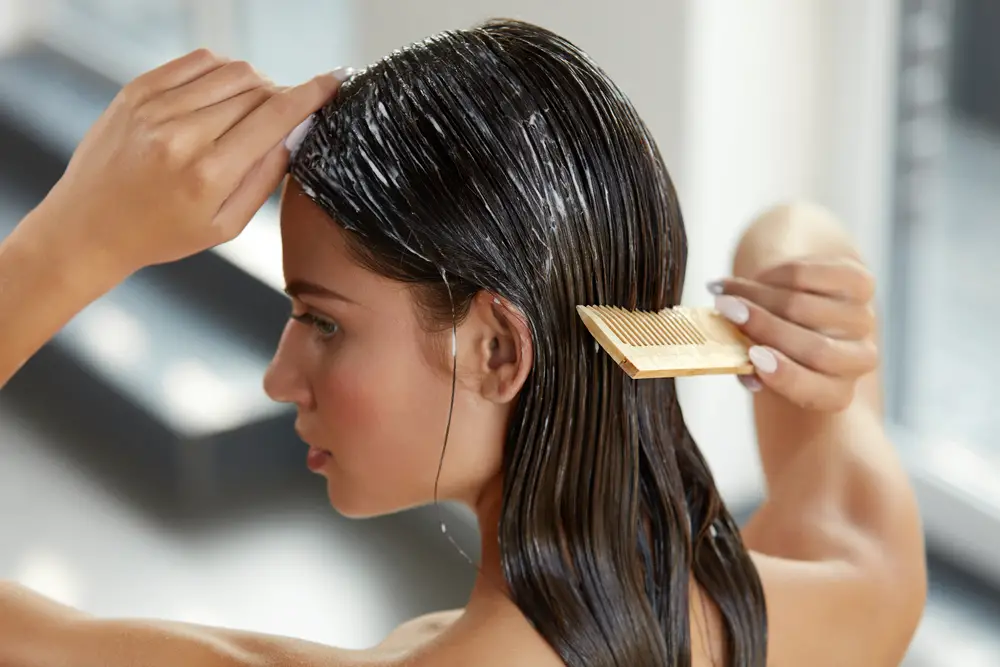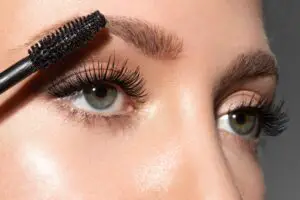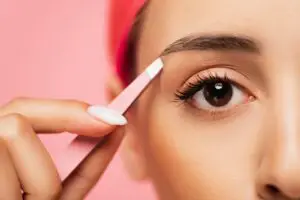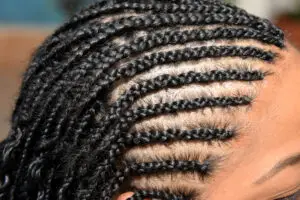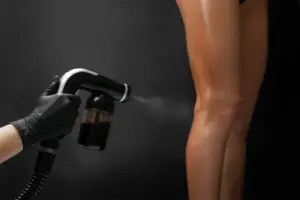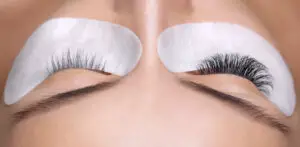Ice therapy for hair is a relatively new trend in the hair care industry that involves using cold temperatures to improve the health and appearance of your hair. The idea behind this therapy is that the cold temperature can stimulate blood flow to the scalp, which in turn can promote hair growth and improve the overall health of your hair.
There are several different ways to incorporate ice therapy into your hair care routine, including using ice packs, cold caps, or specialized hair care products that contain cooling ingredients. Some of these products promise to hydrate, smooth, and add shine to your hair while also cooling and moisturizing your scalp.
While there is some anecdotal evidence to suggest that ice therapy can help with hair growth and improve the appearance of your hair, there is currently no scientific evidence to support these claims.
As with any new hair care trend, it is important to approach ice therapy with caution and to consult with a professional before incorporating it into your routine.
What is Ice Therapy for Hair?
Ice therapy for hair involves using cold temperatures to promote hair growth and improve the overall health of the scalp and hair. It is also known as cryotherapy and can be performed in various ways, including using ice packs, cold water, or specialized scalp cooling devices.
The theory behind ice therapy for hair is that the cold temperatures help to constrict the blood vessels in the scalp, which reduces inflammation and increases blood flow to the hair follicles. This increased blood flow can stimulate hair growth and improve the overall health of the scalp and hair.
Ice therapy for hair is also believed to help seal the hair cuticles, which can lead to smoother, shinier hair. It may also help to reduce oiliness and dandruff on the scalp, as well as soothe any irritation or itching.
How Does Ice Therapy Help Hair Growth?
Ice therapy, also known as cryotherapy, is a hair care technique that involves applying cold temperatures to the hair and scalp.
The cold temperature can help to stimulate blood flow to the scalp, which can promote hair growth. Additionally, ice therapy can help to reduce inflammation and irritation on the scalp, which can contribute to hair loss.
Ice therapy can also help to reduce hair breakage and split ends. Cold temperatures can help to seal the hair cuticle, which can prevent moisture loss and damage to the hair shaft. Additionally, ice therapy can help to soothe an itchy, irritated scalp, which can be a common cause of hair breakage.
Overall, ice therapy can be a beneficial hair care technique for those looking to promote hair growth and maintain healthy hair.
However, it is important to note that ice therapy should not be used as a substitute for medical treatment for hair loss or other scalp conditions. It is always best to consult with a healthcare professional before starting any new hair care routine.
The Benefits of Ice Therapy for Hair
Ice therapy for hair involves applying ice or something cold to the scalp to stimulate hair growth and prevent hair loss. There are several benefits to this type of therapy, including:
Increased Blood Flow
When the scalp is exposed to cold temperatures, blood vessels constrict and then dilate, which increases blood flow to the scalp. This increased blood flow can help to stimulate hair growth by providing essential nutrients to the hair follicles.
Reduced Inflammation
Cold temperatures can also help to reduce inflammation in the scalp. Inflammation can damage hair follicles and lead to hair loss, so reducing inflammation can help to prevent hair loss and promote hair growth.
Improved Scalp Health
Ice therapy can help to improve the overall health of the scalp by reducing dandruff and other scalp conditions. This can help to create an environment that is more conducive to hair growth.
While there is no guarantee that ice therapy will work for everyone, there is some scientific evidence to suggest that it can be an effective way to promote hair growth and prevent hair loss. However, it is important to note that ice therapy should not be used as a substitute for medical treatment for hair loss or other scalp conditions.
How to Do Ice Therapy on Your Hair
Ice therapy for hair is a simple process that can be done at home. Here are the steps to follow:
- Fill a bowl with ice cubes and water.
- Use a wide-tooth comb to detangle your hair.
- Dip a towel in the ice water and wring out the excess water.
- Wrap the towel around your head, covering all of your hair.
- Leave the towel on for 15-20 minutes.
- Remove the towel and let your hair air dry.
It is important to note that ice therapy should not be done too frequently, as it can cause damage to the hair. It is recommended to do ice therapy once a week or every two weeks.
Additionally, it is important to use caution when doing ice therapy, as the cold temperature can cause discomfort or even frostbite if left on for too long. If at any point during the process you experience discomfort, remove the towel immediately.
Precautions and Side Effects of Ice Therapy for Hair
While ice therapy for hair has many potential benefits, it is important to take precautions to avoid any negative side effects. Here are some things to keep in mind:
- Do not apply ice directly to the scalp, as this can cause damage to the skin and hair follicles.
- Wrap the ice in a towel or use a cold cap to protect the scalp from direct contact with the cold.
- Limit the amount of time that the ice is in contact with the hair and scalp, as extended exposure to cold temperatures can cause frostbite or other damage.
- Do not use ice therapy if you have a cold or other respiratory illness, as it can exacerbate symptoms and make you feel worse.
- Consult with a healthcare professional before using ice therapy if you have any underlying medical conditions or are taking medication that may be affected by cold temperatures.
While ice therapy is generally considered safe, there are some potential side effects to be aware of. These may include:
- Headaches or dizziness
- Numbness or tingling in the scalp or other parts of the body
- Redness or irritation of the scalp
- Increased sensitivity to cold temperatures
If you experience any of these symptoms, discontinue use of ice therapy and consult with a healthcare professional. It is also important to note that ice therapy may not be suitable for all hair types or conditions, and may not be effective for everyone. As with any new treatment, it is recommended to start with a small amount and gradually increase use over time to avoid any negative side effects.

I’m Jennifer a beauty and wellness expert. I believe in promoting a sustainable and healthy lifestyle from within. Helping people feel good is my passion; whether it’s teaching yoga or offering skincare advice.

